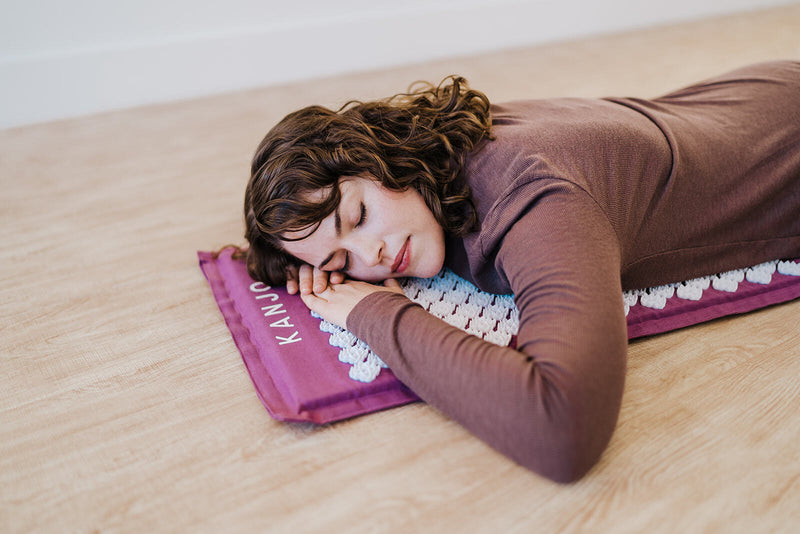An acupressure mat is a health product used in the home to mimic the effects of acupressure. Unlike acupressure therapy that involves going to a specialist in person and paying high premiums for each treatment, acupressure mats allow those experiencing chronic pain to find some relief on their own time.
How does an acupressure mat work?
Traditional acupressure and acupuncture involves stimulating specific meridian points around the body that are tied to the natural flow of chi, the body’s vital force that makes up any living thing. By stimulating these points, it is possible to rebalance the flow of yin, yang and chi in the meridian system and throughout your body. Traditional Chinese Medicine notes that rebalancing these forces can lead to relief from ailments like headaches, sinus pressure, joint pain and beyond.
Where acupressure and acupuncture therapy both involve a trained specialist stimulating specific points individually, acupressure mats act almost like a blanket of acupressure, stimulating many many points simultaneously. The effect is similar to the tradition of lying on a bed of nails, rebalancing much of the body’s energy at once.
Is an acupressure mat better than acupuncture?
There are certain instances where going to see an acupuncture or acupressure specialist is useful, but it’s not realistic or affordable for most people to see a professional regularly. Acupressure mats, then, fill a crucial pain treatment gap in Traditional Chinese Medicine. There are a few areas where we can compare the two directly.
Cost: “Sessions with an acupuncturist run about $65 to $120, depending on where you live,” says Lesley Alderman, a writer for the New York Times. Some of the top specialists even charge as much as $300 per session. Going to see an acupuncturist regularly can add up pretty quickly. So if you’re looking for some relief, but aren’t interested in shelling out hundreds of dollars per visit to a therapist, an acupressure mat is certainly a more affordable option.
Time: Going to see an acupuncturist can also be a hassle for those who don’t live in close proximity to one. Even most major cities will have a selection of therapists to choose from, but scheduling appointments around work and other commitments can be problematic if not a simple annoyance. Alternatively, acupressure mats are available in your home whenever you need treatment.
Effectiveness: The best pain treatment is one you have readily available. (Stretching on a foam roller is easier than going to see a physical therapist.) So, in many ways, acupressure mats are more effective at treating pain than going to see an acupressure specialist — simply for the fact that it’s more accessible. If you were able to bring a therapist to your home multiple times a day, whenever you need him, certainly that would be a more effective treatment. Unfortunately, this is not cost-effective for most people.
How acupressure mats align with Western medicine
Though many believe that acupressure and acupuncture only adhere to the principles of Traditional Chinese Medicine, these therapies also provide a number of benefits that align with modern Western medicine. The same is true for acupressure mats.
Nerve stimulation: Like TENS (transcutaneous electrical nerve stimulation) units, the thousands of stimulators on acupressure mats work in coordination to overwhelm the body’s nervous system wherever they make contact. If the pain you’re experiencing on your back or body is related to the nervous system (it normally is) an acupressure mat will serve to “distract” your brain from that registering that pain, providing temporary relief.
Blood flow: Any time the body undergoes stress in a given region, it responds by sending blood to that area specifically. This principle holds true when using an acupressure mat as the mat’s stimulators create micro-zones of stress throughout your back and neck. Because there are thousands of stimulation points, the stress is spread out and can actually feel quite pleasing. So, when using an acupressure mat, blood flow can aid in the healing of skin and muscles. That’s why you may see some redness on the skin after using a mat. Rest assured, this reaction is normal; your body is responding to the mat as planned.

Whoa! Use this using a shirt yesterday for 15 minutes on my back. today I tried it with bare skin. What a difference! I laid down for the full 15 minutes and I practiced deep breathing. My back still feels warm even after being off the map for 5 minutes. But it’s an invigorating warm. I think I am hooked!